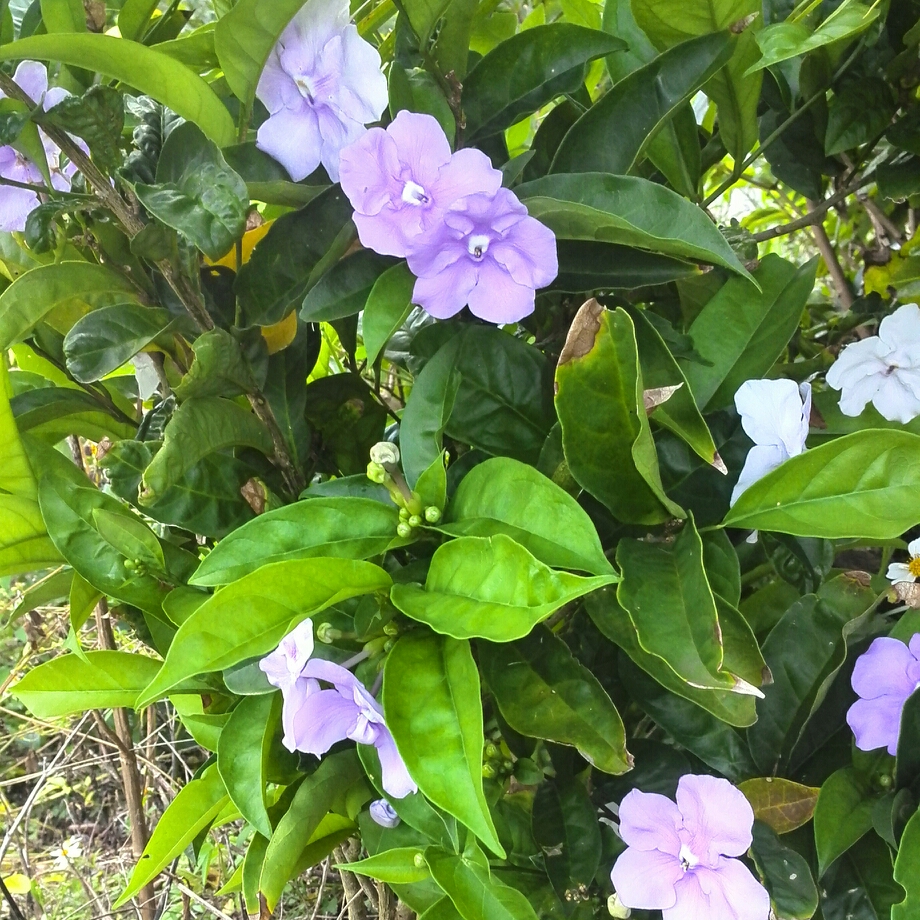
Brunfelsia grandiflora
Large-flowered Yesterday-today- and tomorrow
Brunfelsia are evergreen shrubs or small trees, with simple leaves and sometimes fragrant salver-shaped flowers, sometimes fragrant flat 5-petalled flowers and dense foliage. The new leaves can go purplish in cool weather. 'Grandiflora' has large fragrant (particularly in the evening) purple, lavender and white flowers. The dark green leaves turn yellow in alkaline soil
Contributed by @Jason
-
Full sun
-
Occasional watering
-
Not Frost hardy
-
Moist and free draining
Common name
Large-flowered Yesterday-today- and tomorrow
Latin name
Brunfelsia grandiflora
type
Evergreen shrub or small tree
family
Solanaceae
ph
5.5 - 8.0 Acid - Neutral
Plant & bloom calendar
-
Best time to plant
-
When the plant will bloom
full grown dimensions
 3.00 M
4.00 M
3.00 M
4.00 M
Brunfelsia grandiflora
Brunfelsia are evergreen shrubs or small trees, with simple leaves and sometimes fragrant salver-shaped flowers, sometimes fragrant flat 5-petalled flowers and dense foliage. The new leaves can go purplish in cool weather. 'Grandiflora' has large fragrant (particularly in the evening) purple, lavender and white flowers. The dark green leaves turn yellow in alkaline soil
Flowering
From Late Spring TO Late Summer
Brunfelsia flower from late Spring all through Summer
Planting
From Late Spring TO Early Summer
If the climate is cool, plant in a container, so that the plant can be taken indoors in the cold weather. Where frost is not a problem, plant outdoors in a sunny or partially position in well-draining soil. The best conditions for Brunfelsia is in dappled sun, or in a position where it gets morning sun and afternoon shade
Propagate by softwood cuttings
From Late Spring TO Early Summer
Take softwood cuttings from new growth early in the day in Spring or early Summer. Cut, neatly, a 4" approx. piece of a non-flowering shoot, pinch out the tip, and cut off the bottom leaves. Dip the bottom of the cutting in hormone rooting powder, and carefully place in a pot of cutting compost with the leaves just above the level of the compost. Water, label, cover with a polythene bag, and place in a warm, bright place, out of direct sunlight. Take the polythene bag off periodically for a while for ventilation (at least twice a week)













